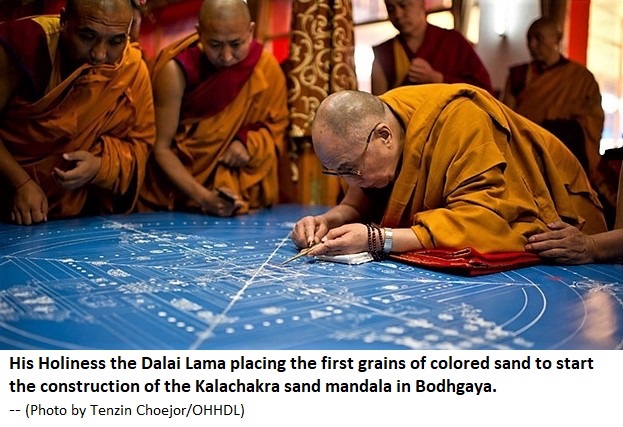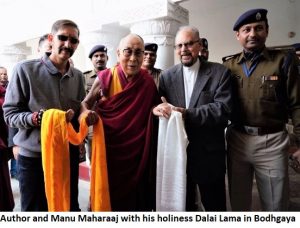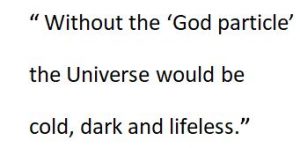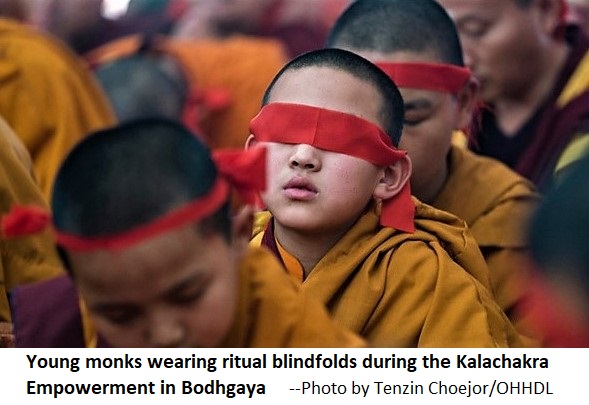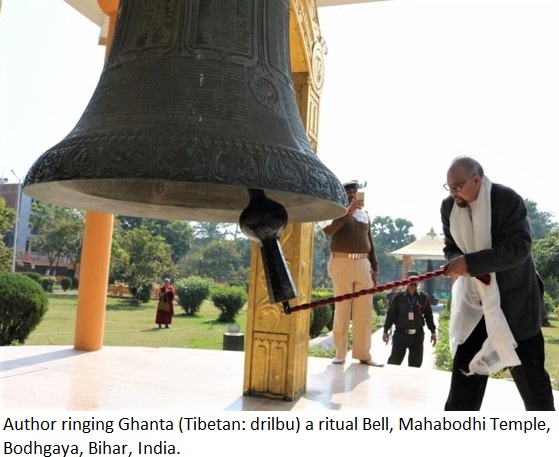For a long time, at least since I met him in Dharamshala, in 2001, when I was Chief Engineer, there, I have been fascinated by His Holiness Dalai Lama. I trust the positivity in him and feel the vibrations while he holds my hand.
-
- He has been known to say that he would have become an engineer if he hadn’t been a monk.
- He has an interest in machines, which he developed as a young boy. As a teenager he repaired a movie projector by himself, without its guide or any instructions.
- His hobbies include meditating, gardening; and collecting and repairing watches.
- At 2, he was renamed Tenzin Gyatso, took the throne at age 4 and became a monk at age 6.
- At age five, in a monastery in Kumbum, Tibet, his favorite game was playing with two white mice who would sneak into his room and distract him from studying; according to an interview with National Geographic Kids.
- The Dalai Lama is interested in science and has for many years been involved with research looking into how meditation affects the brain. “..In my view, science and Buddhism share a search for the truth and for understanding reality.”
- He writes and speaks extensively about the need for a caring attitude toward the environment, the intricate interrelationship between humans and the earth, and the importance of respect for the earth’s living things.
Knowing of his ‘Engineering’ bent of mind, a scientist’s approach to life, respect for Environment as also his hobbies made me and my sons feel good having something in common with this kind human being. Besides, having a wonderful collection of watches, my school going boys liked playing with the Angora rabbits in our, ‘in house’ mini zoo.
During my last stay in Patna with my son Manu Maharaaj , the news of Dalai Lama’s stay in Bodhagya, only 100 miles away, enthused me with the prospect of meeting him and I , fortunately ,did ,courtesy, Mr. Wanchuk ,OSD, Central Tibetan Administration.
- Bodhgaya in Bihar, India, is the holiest Buddist Pilgrimage site where prince Siddhartha Gautma of Kapilvastu attained enlightenment and became the Bhuddha, 2600 years ago.
- The Vajrasna, the seat on which he meditated and Bodhi tree under which he attained enlightenment are standing today as witness to that great event at Maha Bodhi Temple complex , Bodhgaya, a World heritage cultural Property since 2002.
- It is believed that 250 years after the enlightenment of the Buddha, King Ashoka visited Bodhgaya. He is considered the founder of Mahabodhi temple.
- The huge compound comprises of a number of temples and other structures. There is a pond full of fish whom you can feed.
- There are records of pilgrims coming to Bodhgaya from all over India and from almost every land and region where Buddhism spread.
- Fa Hien reached Bodhgaya, the first Chinese monk ever to do so; followed by Hiuen Tsiang. Another pilgrim, this time a Tibetan, was the scholar monk Dharmasvamin. His biography includes details of everything he saw and experienced in Bodhgaya and is the last full account of the place until 1811.
- In later centuries the Mahabodhi Monastery grew into a great monastic university on a par with Nalanda and Vikramasila and became the premier centre for the study of Theravada Buddhism in India.
- Other famous names associated with it include the Kashmiri Tantric siddha Ratnavajra.
- Tsami Lotsawa Sangye Trak is described in one ancient book as “the only Tibetan ever to hold the chair at Vajrasana” suggesting that he was a professor at the university.
- Finally, at the insistence of Alexander Cunningham, the then Director General of the Archaeological Survey, the government intervened and did the job.
- Popular souvenirs have been seeds and leaves from the Bodhi Tree.
His Holiness the Dalai Lama was on a month-long stay to give the Kalachakra teaching and Initiation for the 5th time, in January, 2018.
Back home, studing whatever literature at hand and with inputs from Bodhgya temple Management committee (BTMC), ‘the U.S.News & World Report library staff’ etc.
Whatever facts I could correlate are as under:-
-
- Dalai Lama is the title of Tibetan Buddhism leader. “Dalai” is from Mongolian origin which means “ocean” and “Lama” is from Tibetan origin which means “the highest principle”.
- Dalai Lamas are considered the manifestations of the Bodhisattva (Buddha) of Compassion, who chose to reincarnate to serve the people.
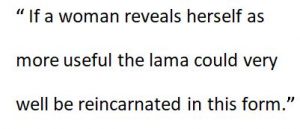
“Kalacakra” is one of many tantric teachings and esoteric practice in Tibetan Buddhism. It is an active Vajrayana tradition, one offered to large public audiences.
- The Kalacakra sand mandala is dedicated to both individual and world peace and physical balance. The Dalai Lama explains: “It is a way of planting a seed, and the seed will have karmic effect. This ancient scripture baffles modern science.
- It offers a strikingly sophisticated presentation of the universe, with a description of atoms and sub-atomic particles that have a surprising correlation with modern theories of particle physics.
- His Holiness has discussed these parallels in meetings with scientists, and there are suggestions that the space particle presented in the tantra may be equivalent to the famously elusive Higgs boson.
- The Higgs boson is an elementary particle nicknamed the ‘God particle’ because of its importance; first suspected to exist in the 1960s. The subatomic particle had long been theorized but wasn’t confirmed until 2013.
- CERN’s Hadron Collider, located in a 27-kilometer tunnel beneath the Swiss-French border near Geneva, the world’s largest atom-smashing machine is most famous for proving the existence of the ‘God particle’.
- The results show with a new level of precision the way the particle is generated and decays, and how it interacts with other particles.
- Without the ‘God particle’ the universe would be cold, dark and lifeless.
- Physicists have set their sights on finding dark matter, the undetectable material that makes up 84 per cent of matter in the universe and binds galaxies together yet whose nature is unknown. If they are able to detect and describe dark matter, it will mark a huge leap forward in our understanding of the universe
- As of 2018, in-depth research shows the particle continuing to behave in line with predictions for the Standard Model Higgs boson.
- More studies are needed to verify with higher precision that the discovered particle has all of the properties predicted.
- The tradition combines myth and history, whereby actual historical events become an allegory for the spiritual drama within a person, drawing symbolic lessons for inner transformation towards Buddha nature.
- The tradition’s roots are in India, but its most active history and presence has been in the monasteries of Tibet.
- Another interpretation of Kalacakra’s prophecy is that it refers to internal war against mental and emotional aggression.
- The phrase “as it is outside, so it is within the body” is often found in the Kalacakra tantra to emphasize the similarities and correspondence between human beings and the cosmos.
- Tantric iconography including sharp weapons, shields, and corpses similarly appears in conflict with those tenets of non-violence but instead represent the transmutation of aggression into a method for overcoming illusion and ego.
- These are symbols – against the ultimate root of evil, the self-cherishing conceptual identity that gives rise to the five poisons of ignorance, desire, hatred, pride, and jealousy.
The Kalachakra, a term used in Vajrayana Buddhism that means wheel of time or “time-cycles”, has been integral to Tibetan culture and science since it reached Tibet 1,000 years ago. The tradition is a form of nondualism, and it is believed that the Kalachakra was taught by the Buddha himself.
- One doesn’t need to be present at the Kalachakra ceremony in order to receive its benefits.”
The relevance within the Tibetan context is obvious, but what has the Kalachakra to offer the rest of the world?
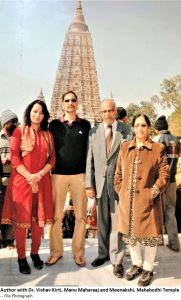
-
- The entire meaning of the subject matter of the Kalachakra tantra is included within the three Kalachakras, or Wheels of Time:
- The Outer Wheel of Time, the Inner Wheel of Time, and the Other Wheel of Time.
- The Outer Wheel of Time is the external world of the environment, and it is also called “The procession of the external solar and lunar days.”
- The Inner Wheel of Time is the human body, or earth-surface. Likewise, the inner channels, elements, and movements of the winds are set forth as the Inner Wheels of Time.
- The Other Wheel of Time is “other” than the preceding two Wheels of Time.
- The guru ripens the disciple’s psycho-physical continuum with the initiations, and the disciple meditates on the path that consists of the generation process and the completion process.
- In this way the yogi actualizes the result the buddha body that is the divine image of emptiness. This is the Other Wheel of Time.
- Despite the incredibly sophisticated and multilayered technical content, the Kalachakra has not put people off.
- Quite the contrary, one of the main reasons for attending is the social aspect of the occasion; Tibetans have traditionally enjoyed religious gatherings as an opportunity to socialize.
- For foreign participants, it is a venue where they can meet like-minded practitioners and share in the generation of positive collective merit, while bathing in the Dalia Lama’s charismatic presence.
- Recognizing the social function of the initiation, His Holiness uses any opportunity to preach his universal message of love, compassion, and peace to the world beyond his flock.
- The Buddha’s intention is to benefit all sentient beings beyond the constraints of time, space, and culture.
- From the cycles of the planets, to the cycles of human breathing, it teaches the practice of working with the most subtle energies within one’s body on the path to enlightenment.
When asked on his website what the purpose of life is, the Dalai Lama’s response was, “to be happy.”
……………………………………………………………………………………………………………………..
Prof. (Er.) Chander P Mahajan is an art critic & a free lance journalist. The Environmentalist stays in Shimla and Dalhousie, Himachal Pradesh, India.


